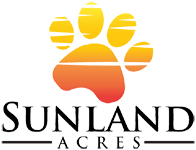All About Grooming
Dogs have about 15,000 hairs per sq inch on their body, compared to humans, who have just 1,000 hairs per sq inch! This is one of the many reasons why your pet’s spa day takes longer than yours. Their coats are much more high maintenance, than our human hair!
Keeping a Regular Grooming Schedule
Groomers typically book several weeks out at a time. To keep your pooches coat in tip top condition, they should be set on a grooming schedule of about every 4-6-weeks. Of course, the frequency in which a dog needs to be groomed depends on their coat type. Dogs with drop coats such as Yorkies, Maltese, or Shih Tzus, may be able to stay on a 6-week schedule. Whereas dogs with a higher maintenance coat type, such as Poodles and Doodles, may do best on a 2–4-week schedule; especially in order to keep their hair longer! A Regular grooming schedule has many benefits such as keeping skin and coats healthy, overall cleanliness, and desensitizing to the grooming process. Even if you have a dog that does not shed, they still lose hair, just like humans! If this dead hair is not brushed out and blow dried, it will become entangled with their healthy hair, resulting in matting. On the contrary, doable coated dogs, who do shed, also need to be regularly brushed and blow dried or else their undercoat can become compacted and eventually mat.
Should You Shave a Double Coat?

With the weather warming up, many may think they are helping their pups stay cool, by shaving their thick coats for summertime, but that is not the case. You should not shave a double coat unless absolutely necessary due to health reasons or matting! The dense undercoat of double coated dogs helps them to regulate their core body temperature. In the same way their coats would trap in heat to warm them up in cool weather, their coats also trap in cool air, to keep them cool during warm weather! Their coats act as their own AC system! Shaving a double coat can result in drastic change in coat texture, hair density, and sometimes the hair may not grow back at all! Instead of shaving their coats, we recommend seasonal de-shed treatments to help remove dead undercoat and tidy ups, to trim paw hair and featherings as needed.
Starting Puppies Young

If you are bringing home a new puppy soon, especially if they have a high maintenance coat type, it is always best to start desensitizing them as early as possible to the grooming process. If they have not finished all of their shots, you can practice with some light, in home grooming. Giving your puppy regular baths, blow drying them, and regular brushing. You will also want to regularly practice cleaning their ears and giving nails trims. If you are nervous about cutting their nails too close, its better safe than sorry, so instead, practice lightly tapping nail clippers to their nails and touching their paws and toes frequently. Make this process as fun and positive as possible, providing lots of treats and praise for proper behavior and offer breaks as needed. Once your puppy has finished their shots, schedule their grooming as soon as possible. Even if you don’t want a full body haircut, you can bring them in for a bath or sanitary trim to get them acclimated to a professional grooming setting. Proper grooming behavior is not innate, it must be learned and taught, starting from home at a very young age! Your groomer will thank you!
At Home Maintenance

Keeping up with your dog’s coat in between grooming services is crucial, especially if you prefer a longer hair style! Making sure you are doing regular brushing from home. A slicker brush or pin brush are great for fluffing and brushing the top layer of coat. But always be sure to go back through the coat with a metal comb to ensure you are detangling all the way to the skin, or else you may think you are brushing affectively, when there are tangles hiding deeper! You can also use a leave-in conditioner spray to help soften the coat and lesson tangles. Keeping your pet’s coat mat free is important for their health. Matted hair is uncomfortable for your pet as it tugs at their skin. Serious matting can result in skin issues as it traps excess moister and bacteria. When your groomer has to shave off tight mats, your pet is at greater risk of abrasion and hematomas as the constricted skin is released, causing blood to rush to the freed area.




